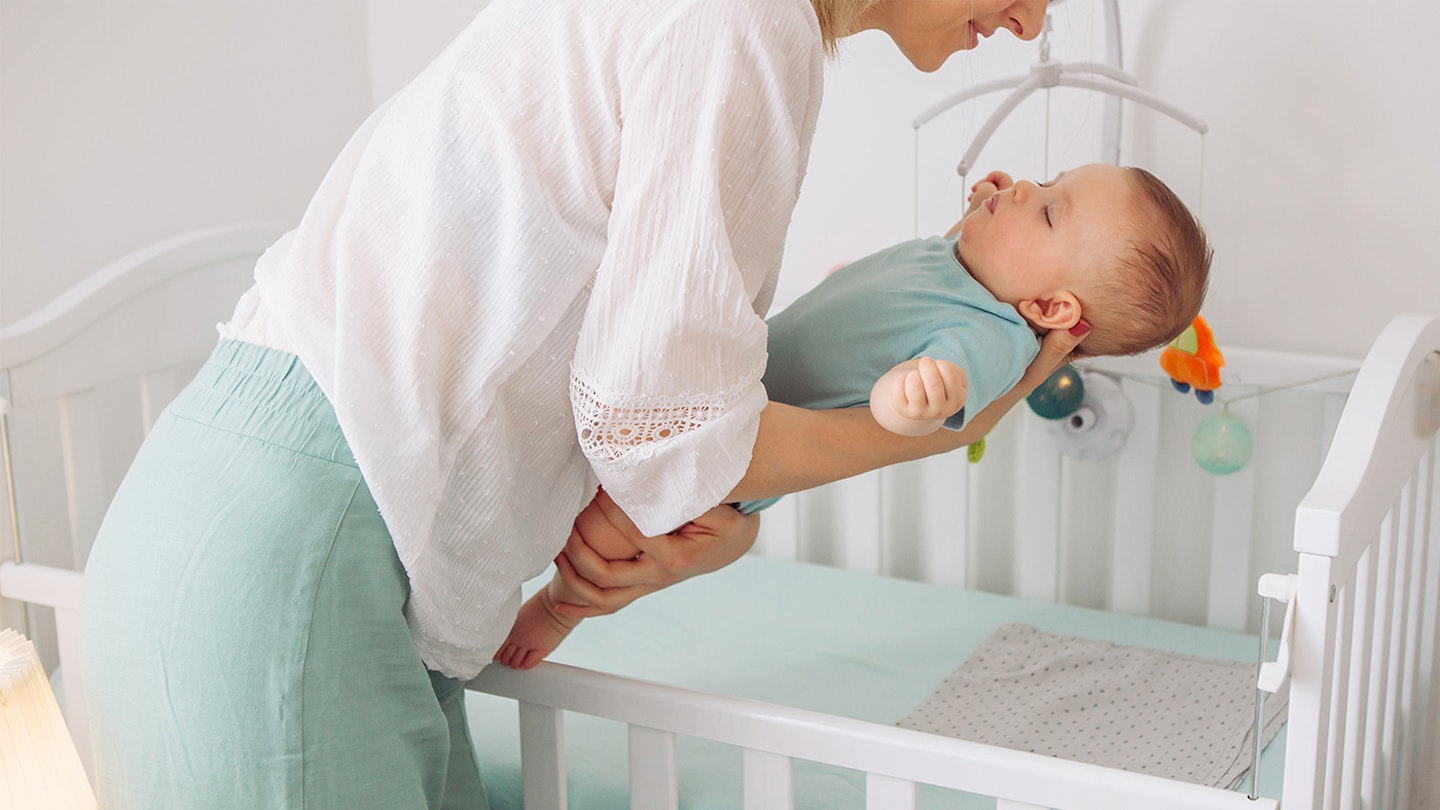A cot will be used by your baby a lot and as a result, it can be one of the hardest decisions to make when it comes to choosing one. If you're on a budget and specifically looking for a cheap cot, in this article we discuss your options and help you make the best choice for you and your baby.
It’s a good idea to buy your baby’s new bed a few weeks before your due date, and get it set up for your return from the hospital. This way you’re not trying to organise things at the last minute, and you’re prepared if your baby comes early. It’s safe to put your newborn in a full-size cot from night one, however, it’s recommended that you keep them in your room until they are six months old.
If it’s a squeeze to have a full-size cot in your bedroom, you might prefer a baby crib or Moses basket instead. These take up less space and are more portable than a cot. Another option, if you like the idea of having your baby’s cot next to your own bed, with no barrier between you, is a bedside cot. You can remove one side and adjust the height to match your mattress. This can make nighttime feeding easier, and many parents and babies like the closeness. Be sure to check that the design of your bed lets you place a bedside cot flush to the mattress.
Related: Best cot
Do you want a cot or a cot bed?
Cot-beds are larger, typically 140 x 70cm, compared to 120 x 60cm for a standard cot. You can remove the sides of a cot-bed to convert it into a junior bed for use up to age five. A standard cot is normally outgrown by two and a half to three years. Cot-beds make the transition from cot to bed easier, because they’re familiar to your toddler, but they tend to be more expensive. Also, you’ll still need to buy a bed for your little one, just later on than with a standard cot.
How can you be sure a cot is safe?
Check that any cot you are considering conforms to current British Safety Standards. It should feature the code
BS EN 716 on the product details or packaging. Be wary if you are buying a second-hand cot. Even though it will be cheaper, you should check it complies with modern safety standards, is in good condition and has no missing parts.
Are several base positions useful?
A multi-position base lets you start off with the mattress higher up, so lifting your newborn in and out is easier on your back, and less likely to wake her. Later on, when your baby starts to pull themself up, you can lower the base to stop them from clambering over the side. While low and high base positions are useful, ones in-between aren’t necessary and you probably won’t want to keep changing the height anyway.
Do you want a drop side?
A drop-side, where you can lower one or both sides of the cot temporarily, can be a good feature especially once you’ve switched to the mattress base being lower down. The drop-side allows you to lie your baby down or pick them up without having to reach so far over the cot, so avoiding strain on your back. This is especially helpful if you’re petite and will struggle to reach down but in our experience, cheap cots rarely offer this feature.
What else should you consider?
Neutral colours: Go for a cot in neutral colours if you want your nursery furniture to co-ordinate, or buy everything from the same range.
Mattress/base dimensions: Mattresses are rarely included with cots. An unusual size or shape of base could reduce your mattress and sheet options. Check the dimensions of the cot and mattress for compatibility before buying. The mattress must fit snugly on the base, without a large gap round the edges. One way to check is to push it to the edge of the cot. If the gap on the other side is more than 4cm (1.5in), the mattress is too small. This could mean your baby could get an arm or leg trapped, or even risk suffocation.
Storage/changing tray: A drawer under the base is useful if storage space is limited. If you haven’t got room for a proper nappy-changing unit, look for a cot-top changer tray.
Wheels/castor: Not essential but a bonus if you want to move the cot to clean underneath it or to switch rooms.
Teething rail: While teething, your baby might gnaw on the cot’s rails. Non-toxic, plastic ‘teething rails’ protect your baby’s gums and the cot. You can buy inexpensive stick-on teething rails but they won’t fit all cots.
Construction material: Look for a cot made from durable material. Solid wood or good-quality veneer will withstand a toddler bashing toys against it better than a cheaper veneer which easily chips.
Cheap cots to buy
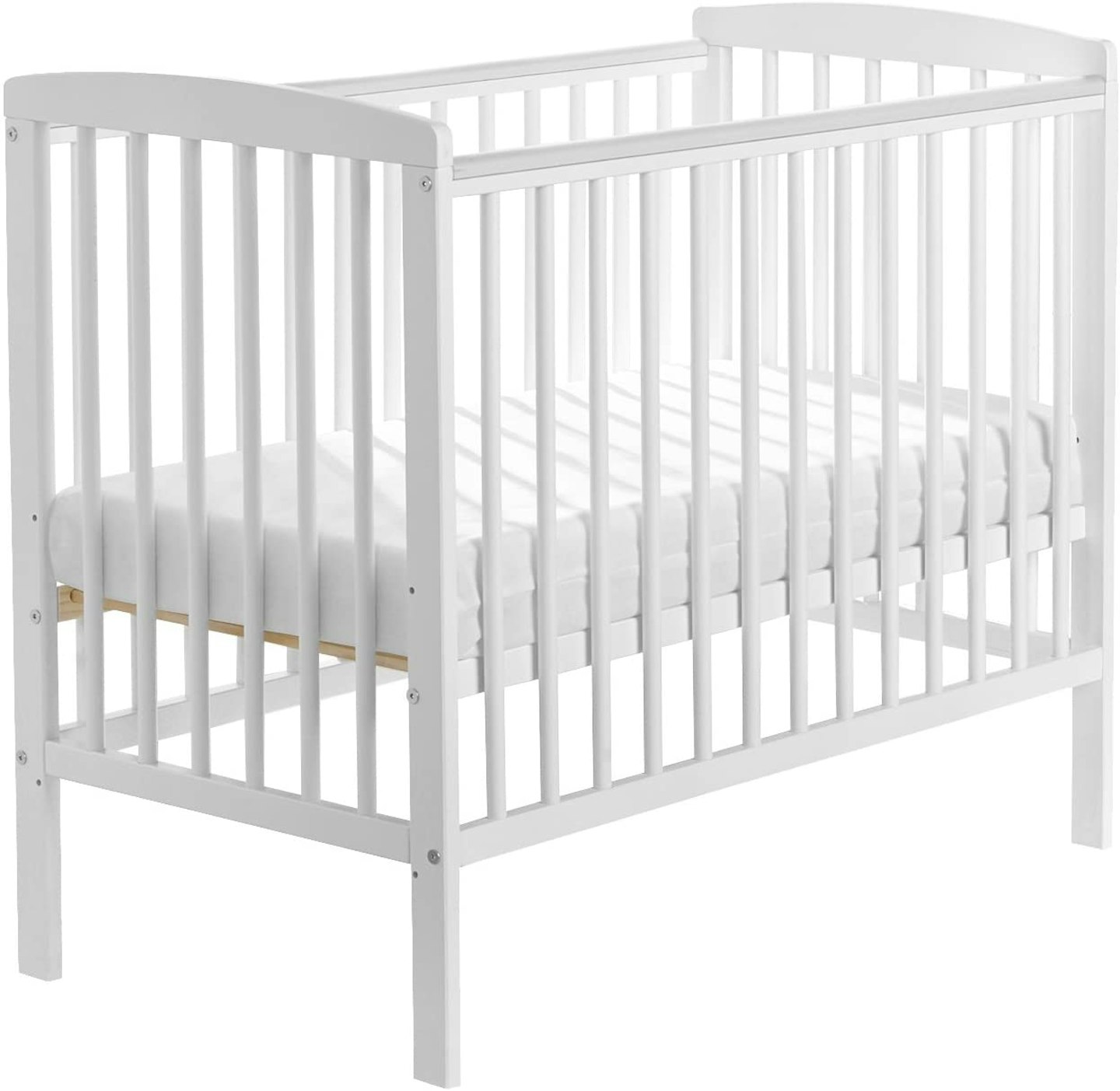 1 of 7
1 of 7Kinder Valley Sydney Compact Cot
Crafted from solid pinewood with a white painted finish, this cot has smooth slimline dowels, sleek side rails and the option of three base height positions. Thanks to it's small size it's ideal if you're lacking space and it also comes with teething rails to protect small teeth and gums.
Measurements: 105 x 58 x 91 cm
Review: "A really good space saving cot! We have a small bedroom and the cot fits in nicely. It looks really cute too and is quite sturdy and I feel like she is really safe in it. My daughter approves of it. She's 6 months and fits in it very well and has plenty of room left to grow so this cot should last her til minimum of 1 year old and to add she is a very tall baby."
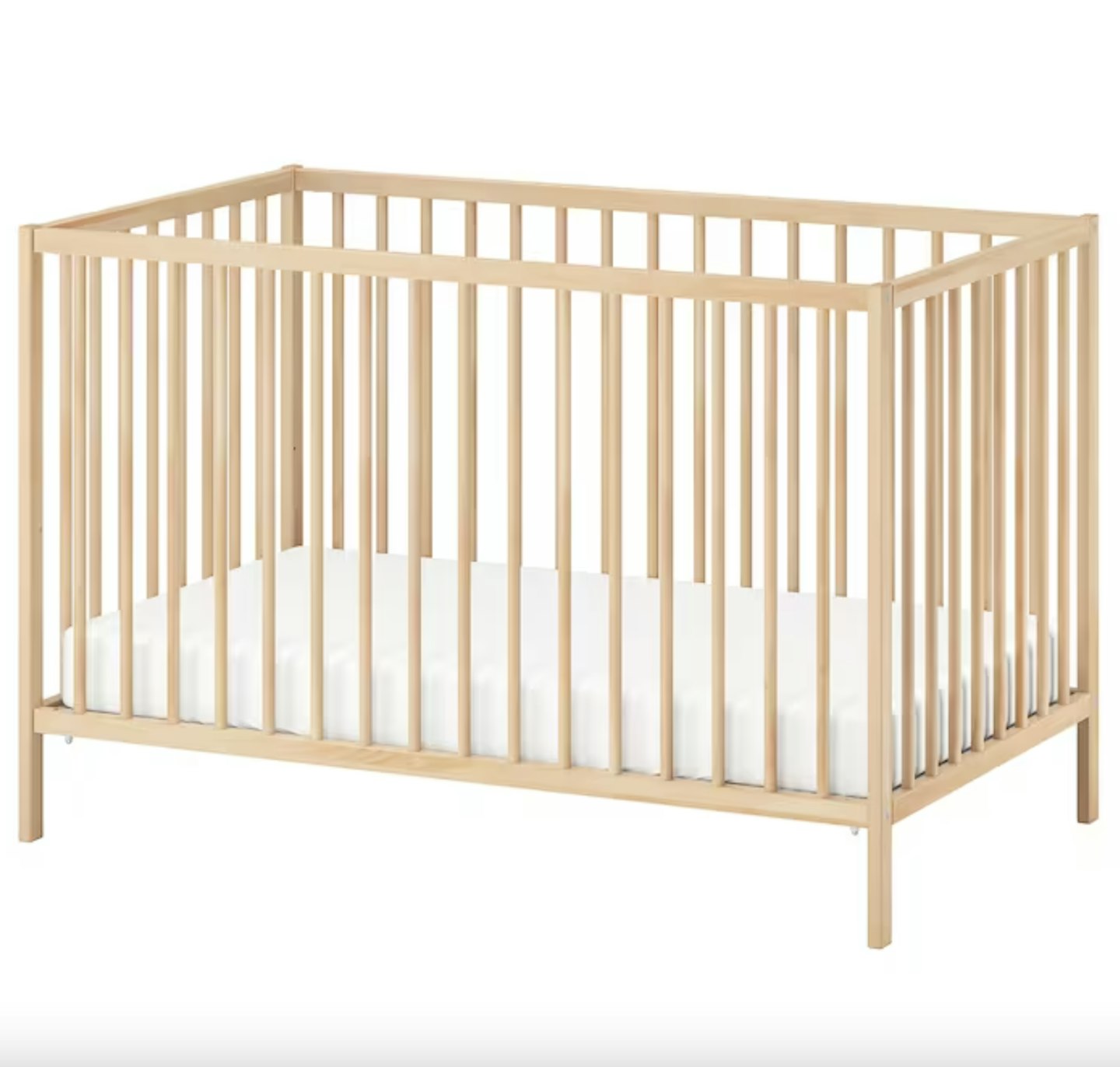 2 of 7
2 of 7SNIGLAR cot
Sweet and simple, the base of this cot can be placed at two different heights. It's also well ventilated for good air circulation. The cot is made from solid beech, a hardwearing, durable and natural material.
Measurements: 60 x 120 cm
Review: "Great value for money and meets all the safety regulations. I will be painting the bars to match our nursery but it is beautiful as is."
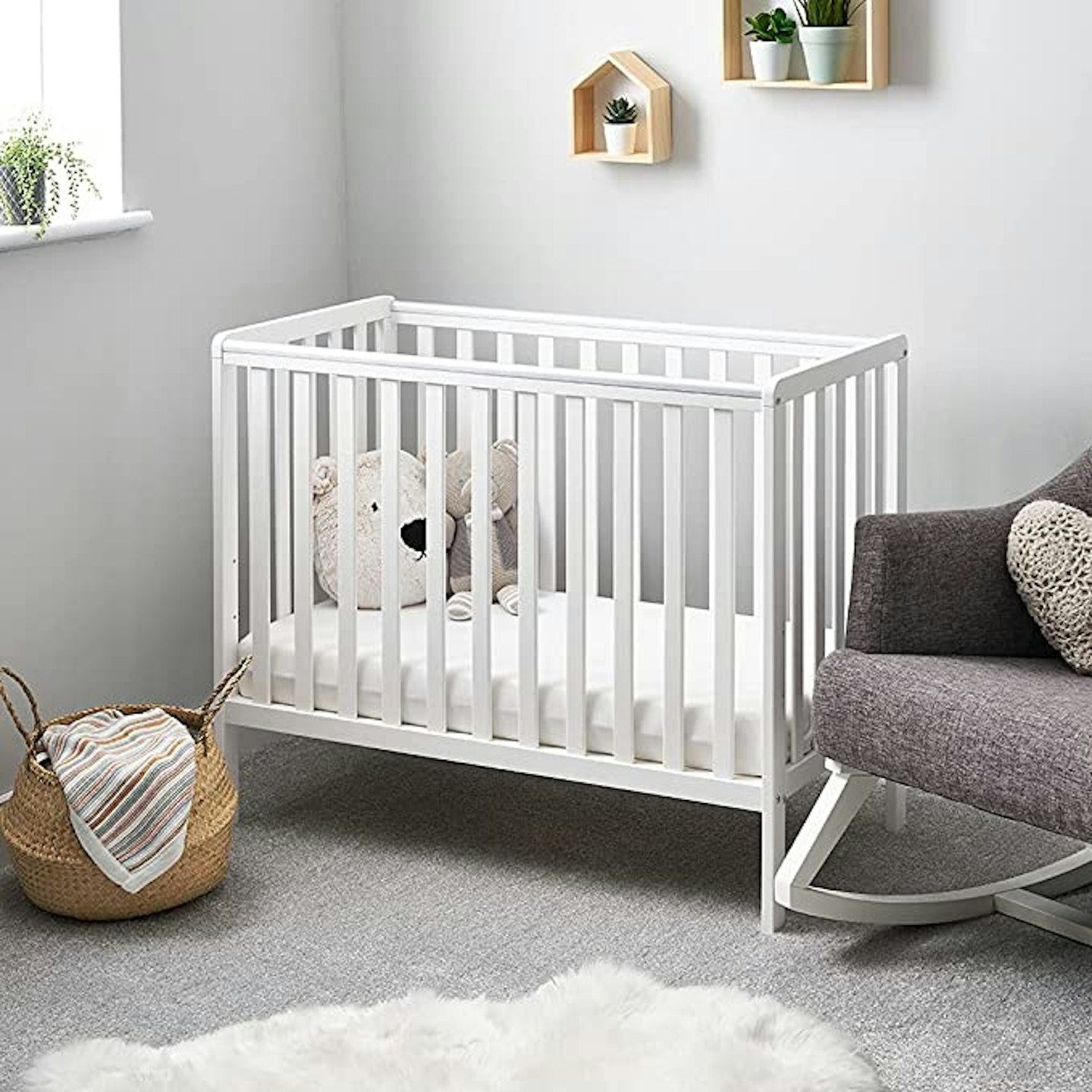 3 of 7
3 of 7Obaby Bantam Space Saver Cot
Another compact option, this cot has an open slatted design which means you can also keep an eye on your little one at all times. It also provides a three position adjustable height base and teething rails.
Measurements: 104 x 55.8 x 85.4 cm
Review: "Impressed with this. We needed a smaller cot for daytime naps. Fitted the bill perfectly. Easy to put together and feels sturdy. Really happy with it."
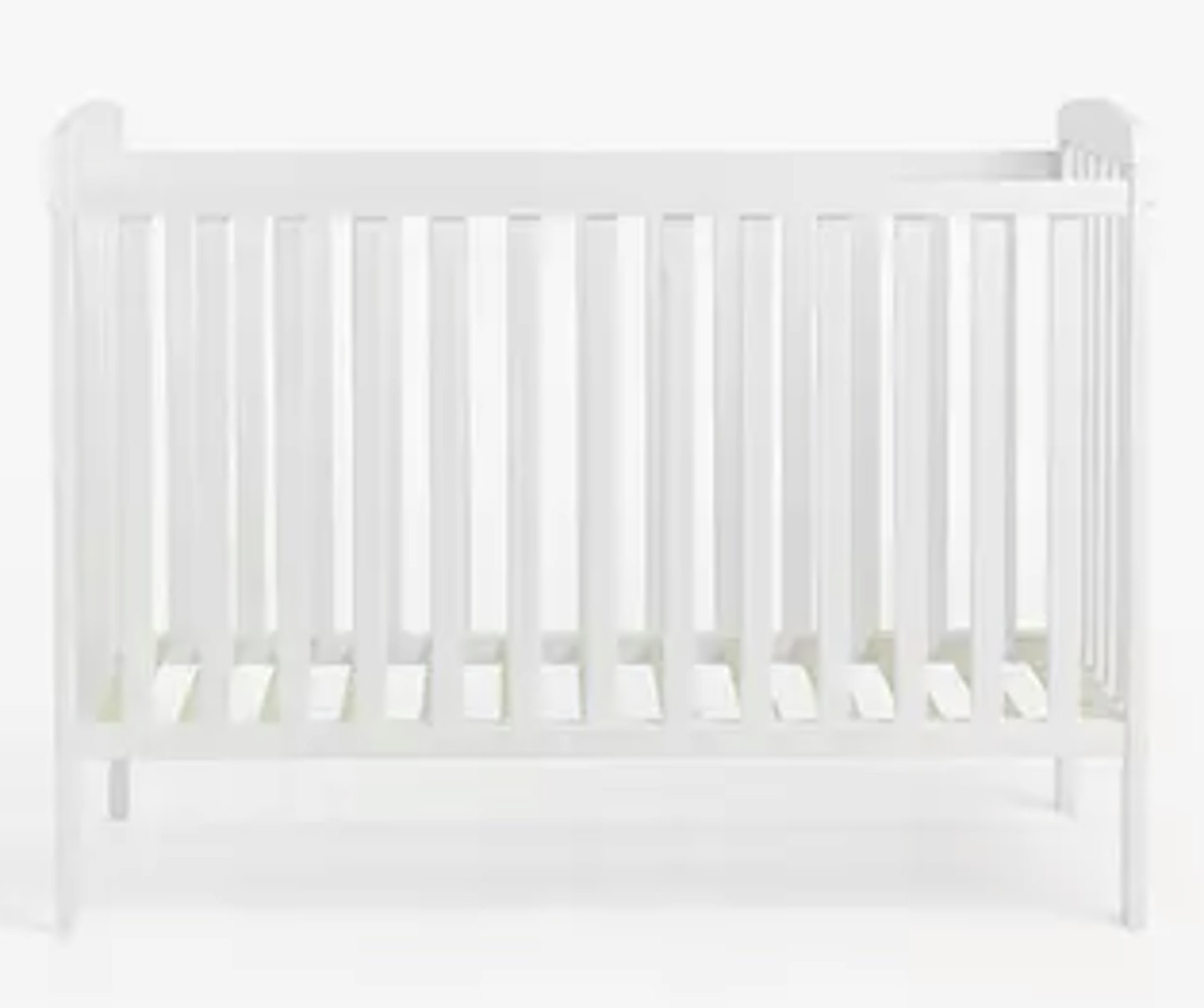 4 of 7
4 of 7John Lewis & Partners Elementary Cot
Easy to assemble, this cheap cot from John Lewis has two adjustable base positions. Why not use the space under the cot for storage to keep your child's favourite toys handy?
Measurements: 120 x 60cm
Review: "We really love this cot. We bought it when our son outgrew his moses basket and it fits perfectly beside our bed. Brilliant product and didn't break the bank. Easy to assemble and delivery was quick and efficient - the driver even brought it into the house. Great product, would definitely recommend."
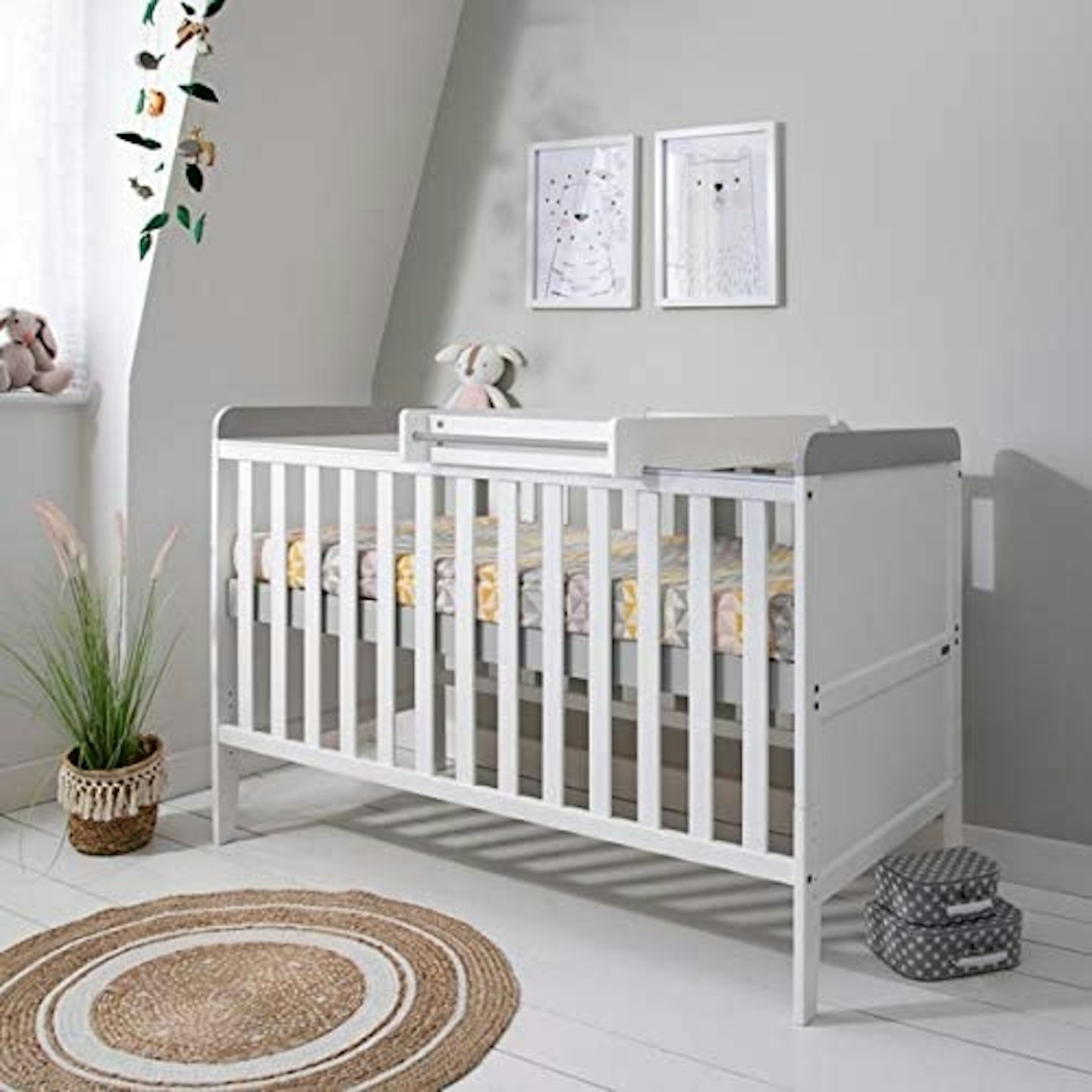 5 of 7
5 of 7Tutti Bambini Rio Wooden Cot Bed
Made from New Zealand Pine, we love that this Tutti Bambini cot comes with matching cot top changer which attaches securely on the top of the cot bed. Better yet, it converts into a junior bed for when you baby starts to grow up and will be for up to approximately six years.
Measurements: 144 x 87 x 95 cm
Review: "We love it our baby loves it everyone loves it. Beautiful cot and top changer. Was easy for my partner to build and will lasts out little one till he's at least four. Great value for money."
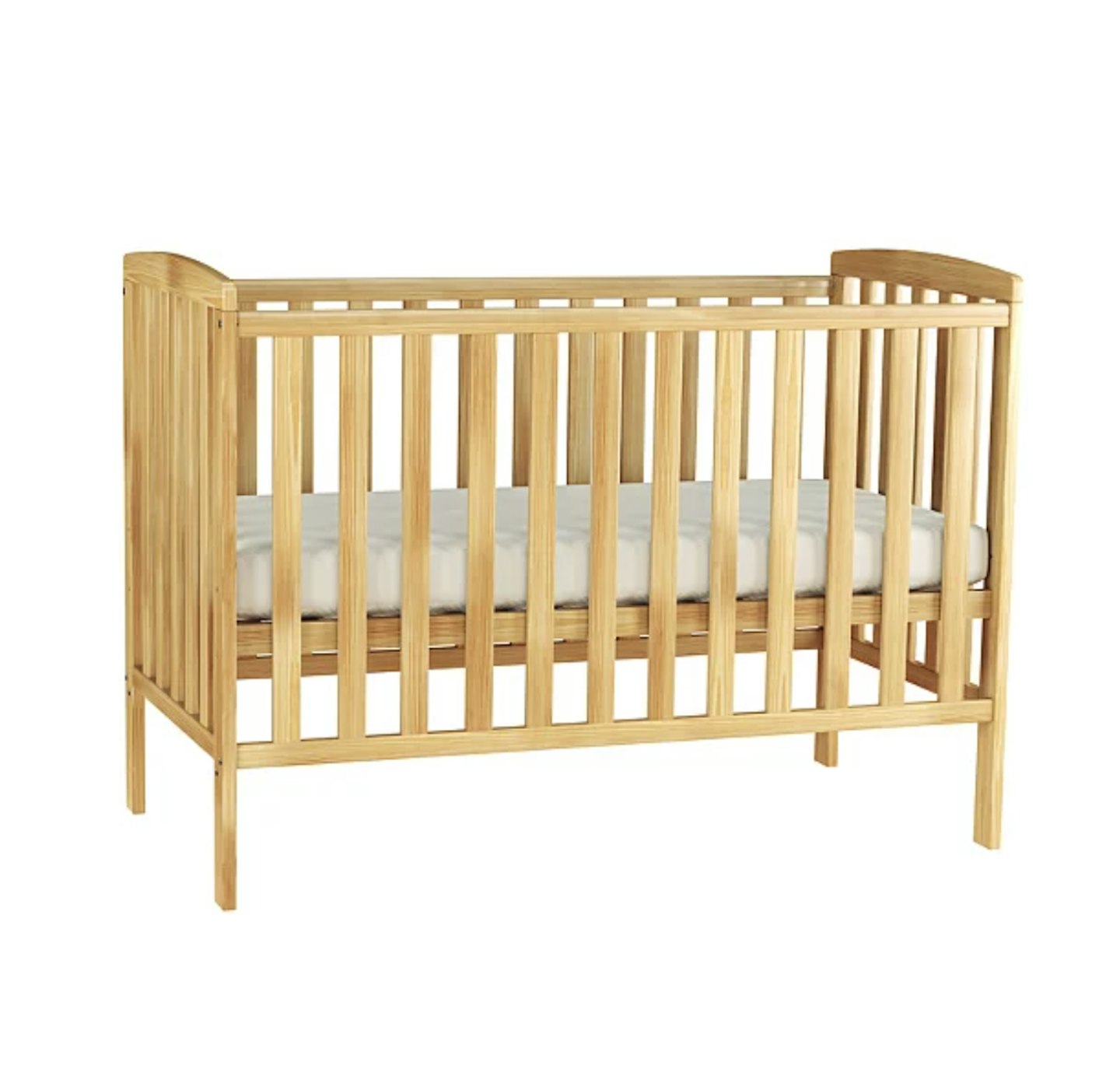 6 of 7
6 of 7Rafferty Cot
Ideal for a modern nursery, this cot has smooth side rails with fixed sides plus the option of three base height position which you can easily adjust as your baby grows. Made from solid pine wood, it comes with teething rails for added protection.
Measurements: 124.2 x 65 x 91 cm
Review: "Easy to put together. Great quality and great value for money. Very pleased with my purchase would definitely recommend."
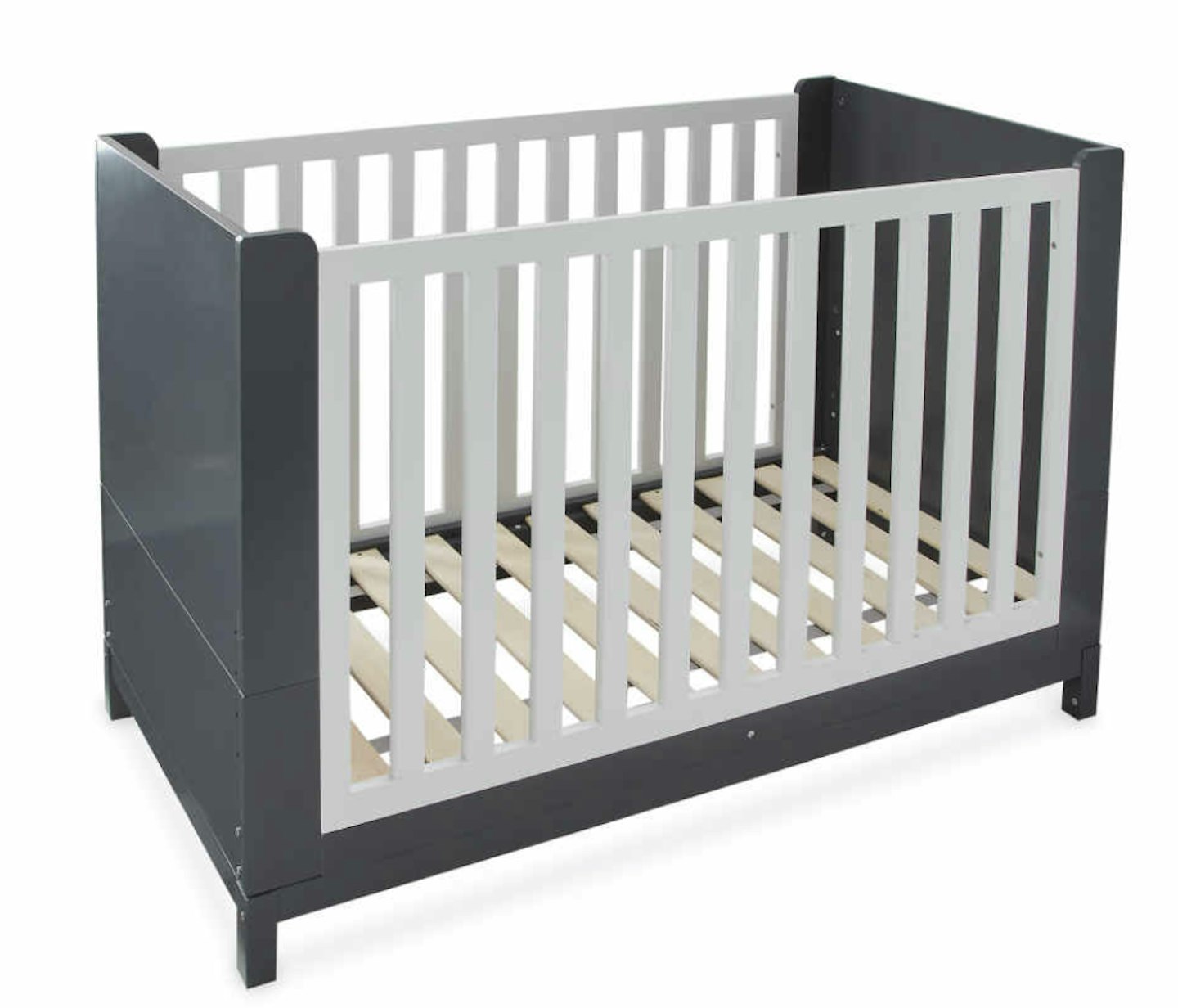 7 of 7
7 of 7Mamia Grey And White Cot Bed
Yep that's right - Aldi do cots! Their white with grey contrast cot features three adjustable positions for your growing youngster and it can then be converted to a toddler bed by simply removing the side panels.
Dimensions: 143 x 75 x 96 cm
Emily Gilbert is the Features & Reviews Editor for Mother&Baby and has written for the website and previously the magazine for six years. Specialising in product reviews, Emily is the first to know about all the exciting new releases in the parenting industry.
